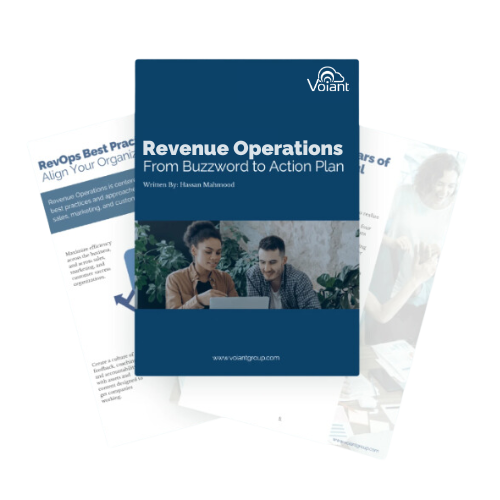A Key to Business Profitability
In the ever-evolving landscape of organizational forecasting, the ability to accurately predict and plan for good and material demand stands as a critical function for business success. Without strong demand forecasting capabilities, companies face the possibility of carrying surplus inventory, or worse, missing out on valuable opportunities due to a failure to anticipate customer needs and preferences.
In today's volatile world, with increased supply chain challenges and escalating costs of goods sold, the necessity for precision in demand forecasting has never been more important. Agile demand forecasting emerges as a critical tool, offering businesses the agility needed to navigate through uncertain market conditions while optimizing supply chain efficiency and safeguarding profitability.
This blog explores the vital role of agile demand forecasting in contemporary business operations, shedding light on its significance amidst the challenges of a dynamic marketplace, how it works, the methods to consider, and the steps to get started.
Enhancing Demand Forecasting
In its optimal functioning, demand forecasting utilizes various aspects of organizational data, including account information, sales trends, and shopping patterns, alongside factors such as customer purchasing intent, CRM, and opportunity data. Additionally, it should incorporate broader macroeconomic.png?width=250&height=250&name=Untitled%20design%20(50).png) indicators, competitive analysis, customer feedback, and other third-party data sources to provide a comprehensive understanding of future business trajectories.
indicators, competitive analysis, customer feedback, and other third-party data sources to provide a comprehensive understanding of future business trajectories.
By harnessing a modern technology stack and RevOps-enabled tools, organizations can leverage advanced data analytics capabilities, along with artificial intelligence (AI) and machine learning (ML), to integrate and analyze these diverse data sets. This integration empowers supply chain managers to generate increasingly accurate and resilient forecasts, enhancing their ability to anticipate and meet demand fluctuations effectively.
What Are Some of the Methods of Demand Forecasting?
Depending on the nature of the business, the volatility of demand, and the characteristics of the existing customer base, different methods can be applied to achieve the most accurate demand forecasting results. Selecting an appropriate method or a combination thereof is essential for demand forecasters.
- Macro-level forecasting involves examining broader economic conditions and external factors that could influence business operations. This method is best suited for products with consistent demand and established organizations whose sales are more affected by price changes than internal or competitive factors. A classic example is the demand for Coca-Cola beverages.
- Micro-level forecasting focuses on specific products, regions, or customer segments to capture unexpected market shifts. For instance, an HVAC company might need to increase inventory in South America due to an anticipated heatwave.
- Short-term demand forecasting, which spans less than 12 months, can be conducted at both micro and macro levels. Collaborating with sales and marketing teams to plan promotions or sales pushes enables anticipation of demand shifts, facilitating effective inventory management to accommodate anticipated seasonal increases.
- Long-term demand forecasting, often integrated into Long-Range Planning, extends over a larger timeframe. This approach is invaluable for planning strategic investments, acquisitions, and expansion into new markets.
Three steps to get started with demand forecasting
Here are three simple steps to help you establish good supply chain planning strategies and demand forecasting best practices:
1. Build demand planning as a part of the supply chain process. .png?width=155&height=155&name=Untitled%20design%20(51).png)
Demand planning is an integral component of overall supply chain planning, requiring synergy with functions such as supply planning, inventory management, and Sales and Operations Planning (S&OP). Its primary focus should remain on determining the quantity and timing of customer product purchases. However, it is common for demand planning to become overly intertwined with the aforementioned capabilities. Demand planning ought to be integrated with these functions rather than coerced to align with them. This entails utilizing an integrated planning solution rather than shoehorning demand planning into a tool intended for a more specific supply chain function.
2. Demand forecasting software loves data, data, and more data.-1.png?width=155&height=155&name=Untitled%20design%20(52)-1.png)
When supply chain technologies, particularly those involved in demand and inventory forecasting, are enhanced with AI and machine learning, they become increasingly better, more accurate, and more insightful as they receive more data. Don't rely solely on backward-looking data such as past sales or product performance; consider additional sources like news, politics, social trends, and customer insights.
In today's landscape, data analysis doesn't need to adhere strictly to linear and simplistic methods to be effective. Modern data management tools are capable of curating and processing large and complex datasets. Furthermore, AI and machine learning technologies provide both speed and intelligence, enabling advanced predictive analytics while also learning from experience and cumulative data inputs.
3. Budget and plan accordingly to optimize demand forecasting.
.png?width=155&height=155&name=Untitled%20design%20(53).png)
Supply chain planning necessitates a realistic and strategic approach to achieve optimal results. Legacy practices and workflows are challenging to adjust and often met with resistance to change. However, enhanced demand forecasting and supply chain planning can ultimately boost profitability, mitigate risk and loss, and offer supply chain team members a more streamlined and efficient working experience.
Allocating budgets and team resources early on enables businesses to foster better buy-in and facilitate a smoother rollout of their supply chain optimization plan.
In conclusion, demand forecasting remains a cornerstone of organizational success in today's dynamic business environment. As explored, the ability to accurately anticipate and plan for customer demand is paramount, with agile forecasting emerging as a critical tool to navigate volatile market conditions and optimize supply chain efficiency. By leveraging advanced technologies and adopting strategic approaches, businesses can enhance their forecasting capabilities, mitigate risks, and drive profitability in the ever-evolving landscape of supply chain management.
Enter your email to get in touch with a Voiant team member and schedule time to learn how you can start to implement an agile demand forecasting process.




.png?width=352&name=webinar%20(1).png)
.png?width=352&name=Compensation%20Plan%20Building%20(9).png)
.png?width=352&name=Sales%20Capacity%20Planning%20(2).png)